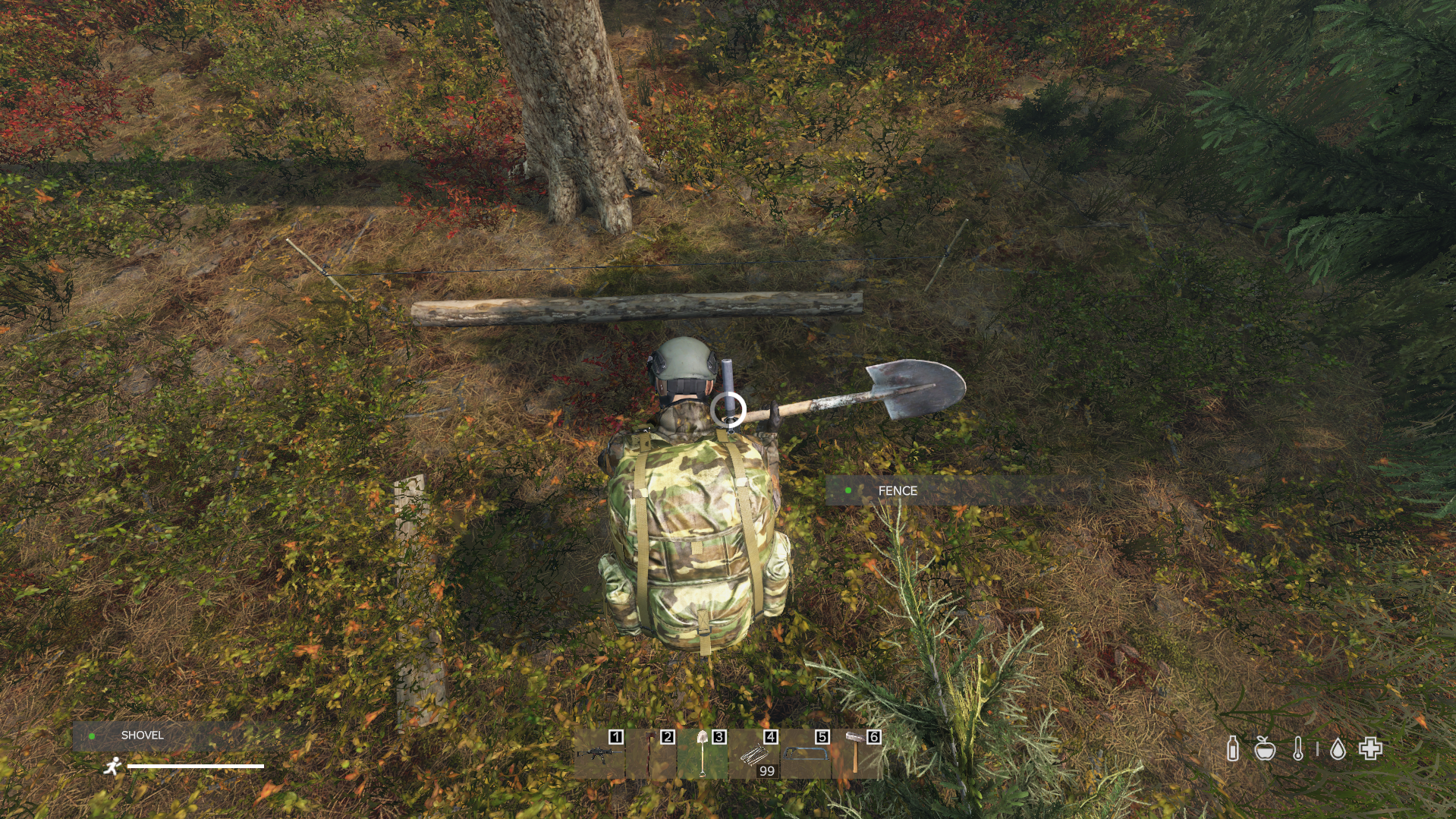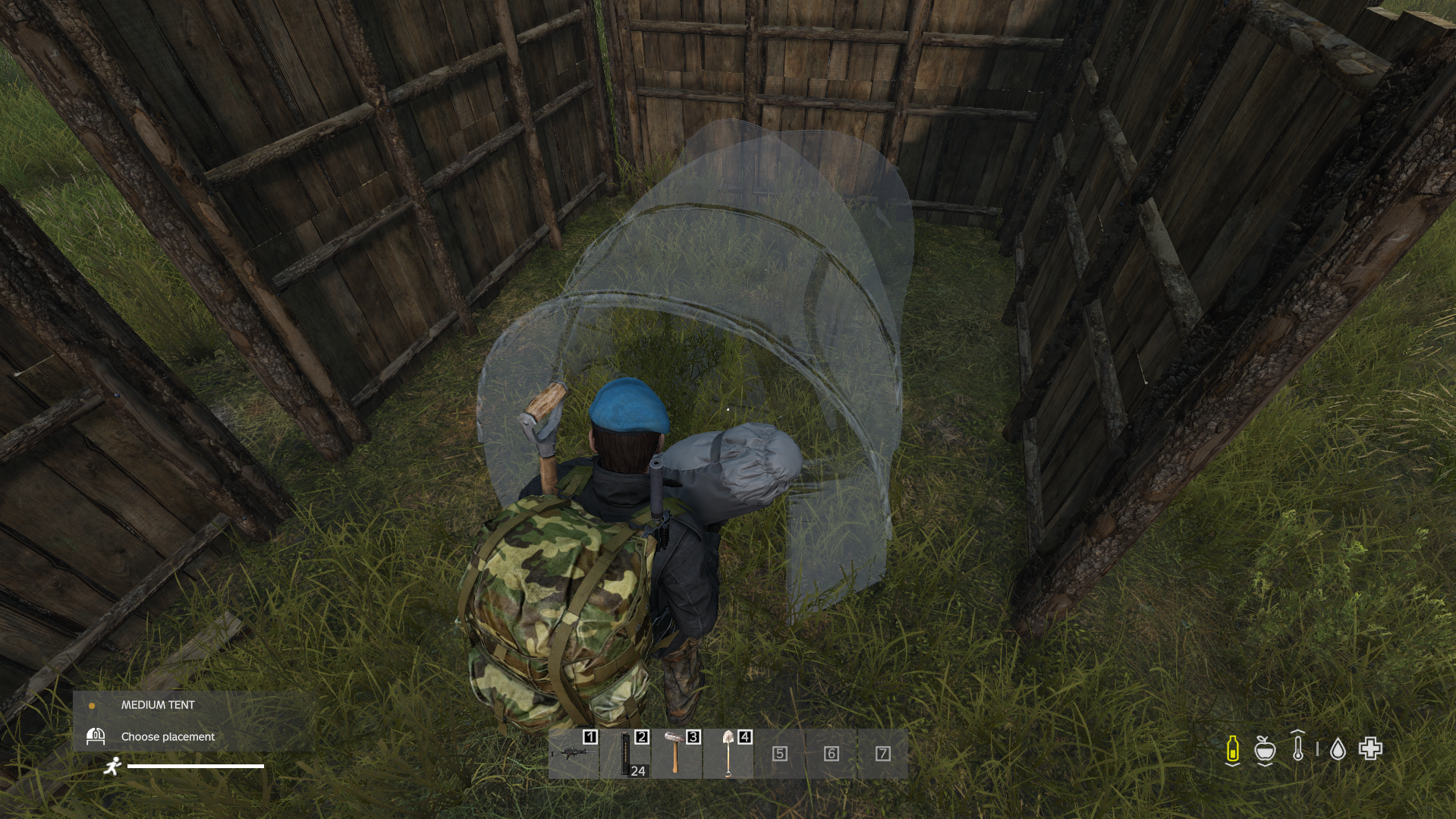DayZ is a popular survival shooting game that challenges players to survive hordes of zombies and other players. Knowing how to build a base boosts your chances of survival, as your base is where you stash all your loot and supplies. Without one, you’ll be an easy target for players and zombies to hunt down.
You’ll learn how to build a base in DayZ if you read on. These steps work for all platforms. We’ll also have some suggestions for base locations.
How to Build a Base in DayZ on the Xbox
The process for building bases is the same on all platforms. Like most games, you start in DayZ with few resources, much less to build a base. You need to roam around and scavenge items before you can begin crafting. When you obtain enough resources and found the perfect location, you can build a base.
To build a base, follow these steps:
Step One – Gathering Resources
Gathering resources is a part of the Dayz game mechanic. If you want to build a base, though, you’ll need some specific resources.
- Start a new game of DayZ or load one of your preexisting games.
- Roam around the world and forage for resources, picking up items with X.
- Press “View” to open your inventory to check your resources.
Some of the resources to gather are:
- Rags
- Nails
- Sticks
Generally, you can find these resources in wooded areas and existing structures. You start with some Rags, but you need to scavenge for everything else. Alternatively, you can make Rope from Rags if you feel like scavenging takes too long.
Fences require two Logs, 18 Planks, and 36 Nails, but you can replace the wooden planks with three Sheet Metal for stronger Fences. Metal grants you extra protection from incoming damage, as it takes more time to destroy Metal Fences. Metal Fences should be used in crucial points if you don’t have a lot of resources.
Step Two – Crafting Kits
Fence kits allow players to plot the perimeter of their new base. Check out the steps below to get started:
- Craft Fence Kits with one Rope and two Sticks.

- Locate tools like Shovels, Hammers, and Hatchets, usually found in farms and industrial areas.
- Place your Fence Kits in the area where you want to build a base.

Fence Kits are reusable, and you need to pick them up every time you finish constructing a Fence. There’s no need to craft another one unless you lose it. Therefore, you get to save your Rope for other features.
Step Three – Constructing the Base
Now that you have the necessary components, it’s time to build your haven.
- Cut down some trees with a Hatchet or Axe.

- Carry the Logs back to your base.

- Drop the Logs near your Fence Kits.

- Use a Shovel to build a foundation and erect the fences.

- Craft some Planks and Nails.

- Drop them near the fence posts and equip a Hammer or Hatchet.
- Press X to craft the fence frames and coverings.

- Repeat until you encircle the area.
- Use some Pliers to create a Gate from one of the fences. If you can find some locks to secure the gates, install them for extra security.
- Once you have walls around your base, you can set up a tent and complete your simple base.

Building a base takes a long time because you have to gather many resources before everything comes together. As long as you spend time and patiently gather enough resources, you’ll end up with a secure base to call home.
How to Build a Base in DayZ on the PS4
Fundamentally, the steps are the same as you would build a base on Xbox. There’s practically no difference. Here’s how you’ll build a base in DayZ for PS4:
Step One – Gathering Resources
Gathering the right resources to build a base may be one of the most time-consuming parts of the process. However, you can keep an eye out for your base materials while you’re roaming the world for other things.
- Start or load a game of DayZ.
- Pick up any resources you find with the X button.
- Press “View” to open your inventory when you have enough to begin crafting.
These are the most important items to pick up:
- Rags
- Rope
- Nails
- Sticks
You can find these in many areas, particularly industrial areas, farms, and other buildings. Rope can be found or crafted depending on your needs.
Step Two – Crafting Kits
Fence Kits are an integral part of building a base. Without fence kits, you won’t be able to create the necessary perimeter to protect you and, more importantly, your stuff.
- In your inventory, combine one Rope and two Sticks into a Fence Kit.
- Find crucial tools like Shovels, Hammers, Pliers, and Hatchets. These are found in farms and industrial areas.
- Place your Fence Kits into the ground.
Lucky for you, Fence Kits are reusable. Just remember to pick them up when you’re finished with your construction project, and you can use them again for another one.
Step Three – Constructing the Base
Once you’ve found the perfect spot for your base and gathered the suitable materials, it’s time to start that construction project:
- Use a Hatcher or Axe to fell some trees.
- Bring the Logs back to your Fence Kits and place them next to the Kits.
- Erect the fences with a Shovel.
- Craft or find some Planks and Nails and place them near the Logs and Fence Kits.
- Equip your Hammer or Hatchet and press the X button to build a fence.
- Repeat as needed.
- A pair of Pliers can create Gates for access. Find some locks and install them if you want to secure your base from intruders.
- When done, your base is ready for storing loot.
How to Build a Base in DayZ in a House
Building a base within a house applies to practically any building you can use to bunker down. Buildings can’t be destroyed since they’re part of the map. If you find an excellent structure to construct a base, you’ll be much more protected than staying in a base built outside.
If you spawn near a house or other building, then try to go there immediately. Securing it is in your best interest.
Follow the steps below to build a base in a house or any building:
Step One – Get Some Resources
As with any construction project, you’ll need the right resources to build a base, even if it’s already inside a building.
- Roam around the world and forage for resources, including Rags, Sticks, and Nails. Pick up items with the Interact button.
- When you have enough resources, open your inventory.
Step Two – Crafting and Tool-Gathering
You can’t build anything in this game without the proper Kits and tools. To fortify an existing building, you’ll need both Fence Kits and specific tools.
- Craft Fence Kits by combining two Sticks and a Rope.
- Get the necessary tools if you don’t have them. Tools you’ll need include a Hatchet or Axe and a Hammer.

Step Three – Fortification
Gathering resources and crafting tools is just the beginning of your new fortification project. Now, it’s time to get to work. First, the preliminary steps:
- Go to the building where you want to construct a new base.
- Survey the area and plan out where to place fences.
- Place your Fence Kits in less secure areas.
- Cut down some trees with a Hatchet or Axe.
- Carry the Logs back to your base.

Erecting Fences
Let’s make your new location secure by fencing the perimeter:
- Drop the Logs near your Fence Kits.
- Use a Shovel to build a foundation and erect the fences.
- Craft some Planks and Nails if you don’t have enough.
- Drop them near the Logs.
- Equip a Hammer or Hatchet.
- Combine the materials to create the fence frames and coverings.
- Keep working until your building is sufficiently fortified.
- Get some locks for any gates you have.
- Place some storage tents and other structures you have within the house.

After you get better loot; you can always expand your base and add some more amenities. You can upgrade any base, regardless of the platform. Some upgrades and expansions can include electricity, guard towers, and more. A well-equipped base is much better than a simple wall of fences and locks.
With proper fortification, you’ll get a base that won’t get invaded as quickly as those made from scratch. Some buildings are better than others, though, as you’ll see below.
Best Base Building Locations
Here are some of the best spots for building bases. Depending on your needs and situations, some may be more advantageous than others. Consider these things before settling in.
- Zub Castle
This potential base is a large castle that most find quickly. Its large areas are perfect for loot stashing, and you only need to block the large door. It’s the only entrance, so you’ll have an easier time defending the castle.
- Pik Koslova
Pik Koslova is near some coastal spawn points, and the woody area makes it easy to blend in. You’ll also find it incredibly convenient to chop down trees for fences.
- Tisy Helipads
These helipads are hard to reach, but clans will love the high ground and spacious area. It has one long entryway, and defending it isn’t hard. Find it near the Northwest Military Base.
- Cherno Apartments
By building a base at the very top of an apartment building, you’re practically untouchable. This location is close to many spawn points, and defense consists of shooting down a stairwell. Sounds easy enough.
- Turovo
This place is near a military base, and most players have little reason to come here. There’s a lot of loot to farm, and an Evacuation site is nearby. You’ll have to move over here since it’s not close to many spawn points.
- Cherno Island’s Blue Factory
The entire island is yours if you lay claim to it. If you wall the whole place up, entry is difficult. Clans will find it a great spot to settle down.
Additional FAQs
How can I make my base unraidable in DayZ?
Back in 2019, there was a glitch in the game that made bases “unraidable.” Since then, the glitch has been patched, and there are no “unraidable” bases, only heavily fortified ones.
Where is the best place to build a house in DayZ?
The Blue Factory is hard to access once you fortify it, making it the best natural location to set up for a base. However, the best bases are those difficult to locate. Try building bases in the deep woods. If you find an incredibly remote spot, you can leave it relatively unprotected, and there’s a chance that your loot will still be there when you come back.
No Intruders Allowed
With a sturdy base and powerful weapons, you can survive anything DayZ throws at you. Bases may not be necessary, but if you’re playing with a clan, then settling down will ensure your loot’s security. For those playing alone, bases can protect you from both the zombies and enemy players.
Sometimes, the best course of action is to hide in plain sight. If that happens to work, then you only need a simple base.
What’s your favorite spot to build a base? How many days have your bases gone without getting looted? Tell us in the comments section below.
Disclaimer: Some pages on this site may include an affiliate link. This does not effect our editorial in any way.

















